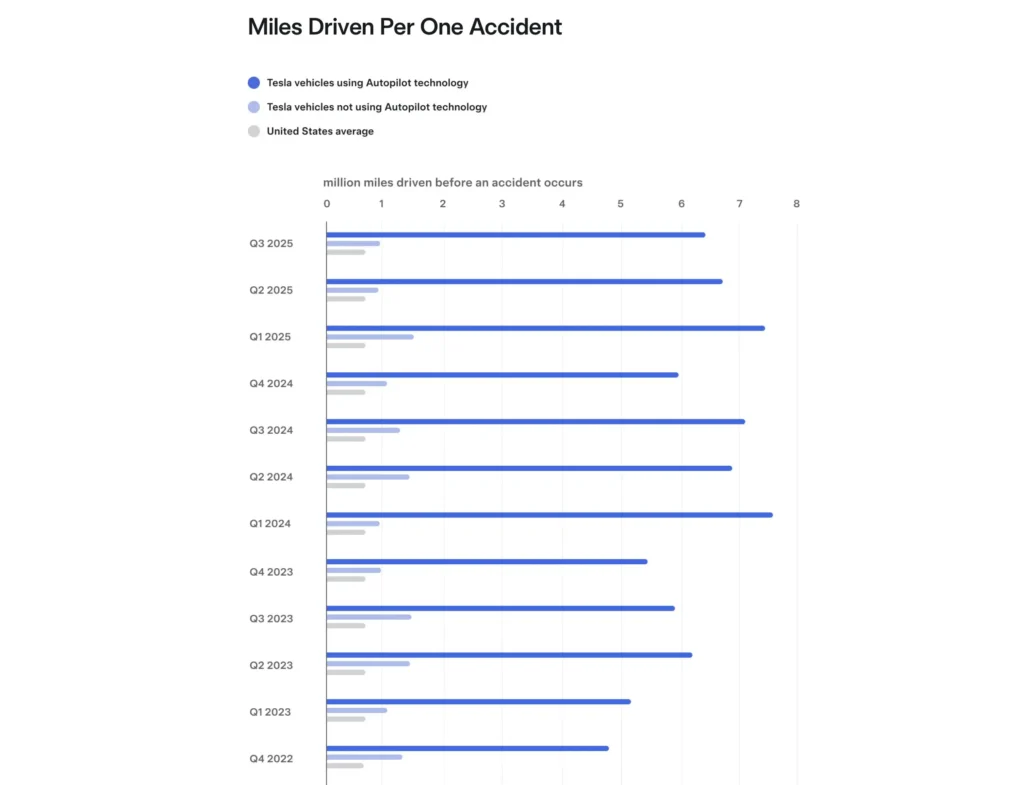Tesla shared its safety report for the third quarter of 2025. The company said cars using Autopilot had one crash for every 6.36 million miles driven and it is about nine times safer than human drivers in the U.S., who record a crash every 702,000 miles. The data comes from national highway and traffic safety agencies.

Tesla’s Q3 numbers dropped a bit from 2024. Last year in Q3, the company got close to 7 million miles between crashes with Autopilot. Tesla’s crash rates often hit their best in the first quarter and weakest at year-end, especially when cold seasons make roads more dangerous. Q1 2024 had the best result so far with one crash every 7.63 million miles.
Q1 2025 was strong, hitting 7.44 million miles per crash and Q2 dropped to 6.69 million miles. Q3 landed at 6.36 millions making Q3 the lowest this year. But, Autopilot still does better than the average U.S. driver. Tesla cars without Autopilot get into one crash every 1.51 million miles. Both Autopilot and the FSD Supervised system use data from every mile to try and lower crash risks.
Results point to a slight decline
While the numbers remain better than average, safety performance has slipped in 2025. Both Q1 and Q2 dropped by over 2% compared to the same quarters in 2024. Tesla has said smaller numbers may come from more diversity in the fleet and ongoing changes.
The government started a new investigation covering nearly 2.9 million Teslas with Full Self-Driving earlier this month. Officials are looking at reports of cars running red lights or drifting into oncoming traffic. The probe started after 58 complaints, which include 14 crashes and injuries.
Tesla is also facing questions about late crash reports related to Autopilot and FSD. Investigators found reports sometimes came in months behind schedule, against the rule of reporting in up to five days. Tesla blamed a glitch in its reporting system and says it fixed the issue.
Seeking full autonomy
Musk continues to push for Full Self-Driving to do the job without drivers while Tesla is testing supervised robotaxis in some U.S. cities, and the company plans to drop safety drivers by year-end. Tesla believes each software update makes its cars better at handling complex situations.
You may also like to read:
- Tesla drivers report smoother rides with FSD v14 »
- Tesla’s FSD V14 beats human driving, Musk claims »
- Musk charts FSD 14.2 to 14.3 sequence in Tesla update »




